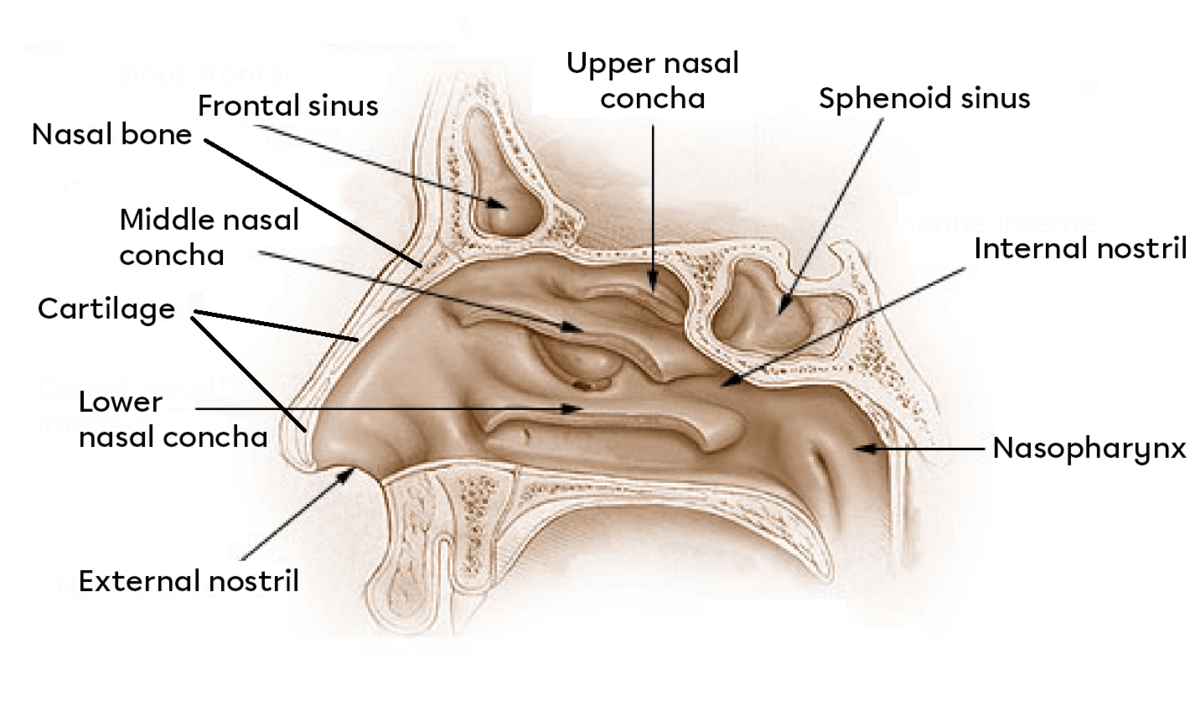The nose is the sense of smell organ. The top of the nose is made up of the nasal bones, two small symmetrical bones that form the nose edge. The nostrils and tip of the nose are made of cartilage. Inside the nose are the nasal cavities, whose surface is uneven due to the presence of folds and nasal conchae (see image below). This irregularity causes air to swirl as it enters the nose. In addition, the tissue covering the turbinates produces mucus, which moistens the air.

The olfactory epithelium is located in the upper component of the nose. This is an area of around 5 cm² containing millions of olfactory cells, or olfactory cilia. These cilia are in fact specialised sensory neurons. The axon from these neurons crosses the bone that forms the ceiling of the nasal cavity, called the ethmoid, and joins the olfactory bulb. This is the tip of the olfactory nerve.

Taste and smell are intimately linked. This is demonstrated by the fact that when your nose is blocked by a cold, you hardly taste anything. In fact, around 80% of the sensations we attribute to taste are actually linked to the sense of smell. Flavours, detected by the tongue, combine with fragrances, detected by the nose. In fact, when we chew food, it releases odorous molecules that reach the olfactory epithelium in the nose.
It is difficult to classify odours into groups, since human olfaction detects around 10,000 different odours. For a substance to be perceived by the sense of smell, it must meet 4 conditions:
-
It must be odorous, i.e. its chemical nature must cause the olfactory cilia to react.
-
Be volatile, i.e. travelled through the air.
-
Be of sufficient concentration to stimulate the olfactory cilia.
-
Come into contact with the cilia and not be blocked by mucus.
When we inhale, odorous molecules enter the nasal cavities and stimulate the olfactory cilia in the olfactory epithelium. The olfactory epithelium transforms the odour into a nerve impulse which is sent to the olfactory bulb. The impulse travels along the olfactory nerve to the olfactory area of the brain. Once the brain has analysed the impulse, the smell can be perceived.
